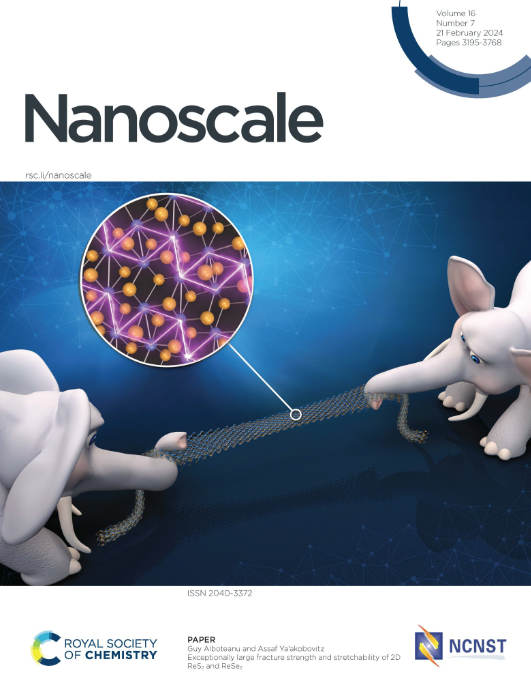Bimetallic PdPt nanoparticles incorporated PEDOT:PSS/Guar gum blended membranes for enhanced CO2 separation
IF 5.8
3区 材料科学
Q1 CHEMISTRY, MULTIDISCIPLINARY
引用次数: 0
Abstract
To address the escalating demand for efficient CO2 separation technologies, we introduce novel membranes utilizing natural polymer guar gum (GG), conjugate polymer PEDOT:PSS, and bimetallic PdPt nanoparticles for efficient CO2 separation. Bimetallic PdPt nanoparticles were synthesized using the wet chemical method and characterized using X-ray photoelectron spectroscopy (XPS) and transmission electron microscopy (TEM) techniques. The fabricated membranes were characterized using various techniques for their morphology, chemical bonds, functional groups, and mechanical properties. Through meticulous fabrication and characterization, the binary blended membranes demonstrated enhanced homogeneity and smoothness in the structure, attributed to the interaction between the polymers; and superior CO2 permeability due to the amphiphilic nature of PEDOT:PSS polymer. The gas separation experiments using H2, N2, and CO2 gases, confirmed that the 20% PEDOT:PSS/GG blended membranes showed the highest performance with sufficient mechanical properties. Moreover, the results demonstrated an increment of 172% in CO2 permeability and 138% in CO2/H2 selectivity, respectively. Further, integrating bimetallic PdPt nanoparticles provided an additional 197% increment in CO2/H2 selectivity, owing to the unique catalytic activities of noble metal nanoparticles. The study not only underscores the transformative potential of polymer blending and noble metal engineering but also highlights the significance of using natural polymers towards sustainable environmental solutions.掺入 PEDOT:PSS/Guar 胶的双金属 PdPt 纳米粒子用于提高二氧化碳分离效果
为了满足对高效二氧化碳分离技术不断增长的需求,我们介绍了利用天然聚合物瓜尔胶(GG)、共轭聚合物 PEDOT:PSS 和双金属 PdPt 纳米粒子实现高效二氧化碳分离的新型膜。采用湿化学方法合成了双金属钯铂纳米粒子,并利用 X 射线光电子能谱(XPS)和透射电子显微镜(TEM)技术对其进行了表征。利用各种技术对制备的膜的形态、化学键、官能团和机械性能进行了表征。通过精心制作和表征,二元共混膜的结构表现出更高的均匀性和平滑性,这归功于聚合物之间的相互作用;PEDOT:PSS 聚合物的两亲性使其具有优异的二氧化碳渗透性。使用 H2、N2 和 CO2 气体进行的气体分离实验证实,20% PEDOT:PSS/GG 混合膜具有最高的性能和足够的机械性能。此外,实验结果表明,二氧化碳渗透率和二氧化碳/ H2 选择性分别提高了 172% 和 138%。此外,由于贵金属纳米颗粒具有独特的催化活性,整合双金属钯铂纳米颗粒后,CO2/H2 选择性额外提高了 197%。这项研究不仅强调了聚合物混合和贵金属工程的变革潜力,还突出了利用天然聚合物实现可持续环境解决方案的重要意义。
本文章由计算机程序翻译,如有差异,请以英文原文为准。
求助全文
约1分钟内获得全文
求助全文
来源期刊

Nanoscale
CHEMISTRY, MULTIDISCIPLINARY-NANOSCIENCE & NANOTECHNOLOGY
CiteScore
12.10
自引率
3.00%
发文量
1628
审稿时长
1.6 months
期刊介绍:
Nanoscale is a high-impact international journal, publishing high-quality research across nanoscience and nanotechnology. Nanoscale publishes a full mix of research articles on experimental and theoretical work, including reviews, communications, and full papers.Highly interdisciplinary, this journal appeals to scientists, researchers and professionals interested in nanoscience and nanotechnology, quantum materials and quantum technology, including the areas of physics, chemistry, biology, medicine, materials, energy/environment, information technology, detection science, healthcare and drug discovery, and electronics.
 求助内容:
求助内容: 应助结果提醒方式:
应助结果提醒方式:


